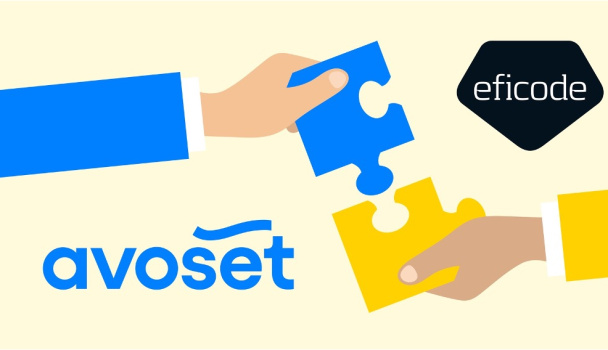After surpassing the milestone of 1,000 board meetings, Markko Vaarnas sits down to discuss how growth companies can get the most out of their boards

This fall, Markko Vaarnas surpassed the impressive milestone of having sat in 1,000 board meetings throughout his career. With experience from both sides of the table—as the CEO as well as a board member—he shares his thoughts on how board work has changed in recent years and how growth companies should organize board work in order to ensure that the company and its leadership fully utilize the support, experience and competence of the board.
October 2022
Although Markko Vaarnas is presently a board professional, he began his ongoing run of 1,000+ board meetings as the CEO of Global Intelligence Alliance Group, GIA. Founded in 1995, the company that coined ‘market intelligence as a service’ expanded from Finland to Europe, Asia and Latin America and grew to €15M in annual revenue before being acquired by M-Brain Group in 2014.
When GIA initially set sights abroad, Markko and the rest of the founding team started looking for external board members. They actively searched for the people that are most experienced in internationalizing professional services companies in Finland, approached them and negotiated with them to join the board.
Markko estimates that throughout his GIA years, he sat in approximately 200 board meetings. He says he has strived to keep the CEO perspective close to heart ever since; as a board professional, understanding it certainly helps.
Now, after another 8 years of 100+ board meetings per year as a board professional, totaling to the impressive 1,000+, the time feels right for him to answer questions and share lessons learned—with insight from both sides of the table.
Has the board work in growth companies changed over time and if yes, how?
Yes, certainly. When we were assembling our board for internationalization at GIA back in the 2000s, we were perceived as pioneers. But a lot has changed since. Particularly in recent years, people have become much more aware of professional board work and how it can be instrumental to the success of a growth company. Founders, investors, and business leaders alike are keen on utilizing startup communities, different forums and 1-on-1 networking to find advisors or board members with the right kind of competence. Similarly, the organic interest toward growth companies has been increasing, and many of today’s senior experts have a ‘give back’ mentality; they have succeeded in business and now they are open to helping others either in an advisory role or by joining a board.
What advice would you give to the founding teams of growth companies?
Quite often, the first effort at establishing consistent and professional board work doesn’t quite hit the mark. The typical board of an early-stage growth company consists of people close to the operative team with perhaps one of the founders as the chairman. This tends to result in lack of preparation, consistency, and overall professionalism at the meetings themselves. In terms of content, there can be a lack of broader vision and utilization of external views as the process is steered by people involved in the daily life of the company. The most efficient way to prevent this head on is to really invest in finding the right chairman and incentivizing them properly. The right chairman would usually not be any of the founders or main investors but rather an experienced professional trusted by both. As for the overall board composition, ideally there would be 4 to 6 board members including the chairman, and the majority should be external to the company.
What does the work of a good board chairman look like?
In my experience and opinion, there is a clear difference between how involved the chairman should be and how the rest of the board members contribute. The role of the chairman requires 2–3x more time and, even more importantly, responsibility and leadership. A good chairman is in regular contact with the company, particularly the CEO whom they would advise and mentor as necessary, and at the time of a crisis they would become very involved in the company. Importantly, it is up to the chairman to make sure that board meetings are conducted in a professional way and the insight of every board member is fully utilized. This often comes down to practical things:
- Preparing well for board meetings, e.g., sitting down with the CEO to understand where the company is at and what to focus on, then calling every board member to discuss their potential input for this, creating the agenda based on all the discussions, sending it to everyone involved well ahead of time and encouraging all to read it and come prepared
- Facilitating the meetings themselves in a consistent manner, fostering high-quality discussions and clear decision making, actions and responsibilities
When the chairman acts in a professional manner, it sets the example and rhythm for the rest of the board as well, helping them to stay organized and inspiring them to add value. In short, board work must be properly led for it to have the impact it should have.
What should growth company leaders understand about incentivizing the board?
There are boards that do their work pro bono and boards that are paid. While it is certainly possible to assemble a board with excellent professionals happy to contribute without financial incentive, the unfortunate reality is that paying the board guides their time management and perception of expectations. I’ve seen that in practice, the boards where work is inconsistent, people miss meetings, come unprepared and don’t contribute much usually tend to be those that are also unpaid. When a board is paid for the work they do, it is a clear statement from the company that they appreciate the board and its insight, and expect valuable contribution. As for how much the compensation should be, it depends on the case. Here, I’d again highlight that the chairman should be much more involved with the company than other board members, and it would be wise to ensure this is reflected in their compensation as well.
Whose responsibility is it to make sure board members contribute?
I was already aware of this when I was working as the CEO and during my time as a board professional I’ve only started feeling stronger about it: the responsibility for making sure that the insight of board members is fully utilized is always with the acting leadership of the company. The chairman and board members can make themselves available and communicate to the leadership that they are ready to help, however the initiative must come from the company. CEOs should be aware of this—at the moment it seems that only some of them are. Referring to my earlier example about an early-stage board with unstructured practices and a chairman involved in operations, as a board member I’ve noticed that these kinds of companies tend to never make full use of the board. Board members are scarcely contacted and often get to contribute only at the meetings. The leadership is busy and stuck in the operational headspace without realizing that the board could help with many questions or issues they are wrestling with.
How should voting rights be considered when assembling the board?
The shareholders’ agreement often details a board with e.g., two investor representatives, two founder representatives and an independent member, to ensure voting rights are proportionally represented within the board. However, it is important to keep in mind that voting is extremely rare in board meetings—I’ve attended less than 10 meetings in my entire life where I’ve voted. Finding a consensus through debate and discussion is how differences are resolved. So, while outlining the representative board in the shareholders’ agreement is certainly wise, it should not guide how the board is then actually assembled but rather work as a backup solution. If the company ownership finds itself in a conflict that is not possible to resolve in normal ways, it can revert the board to the composition outlined in the shareholders’ agreement to retain control.
As the company grows and develops, how to ensure the board renews as well?
The board should serve the current needs of the company with a view for the next 1 to 3 years. It is important to periodically renew the board but usually not every year and not every member at once. A while ago, Takeoff Partners published an article about the specific theme of how renewing the board in growth companies with great insight from Juha Frey and Timo Lappi, besides myself.
To summarize all this, what would be your key takeaway for growth company leaders?
Heading a growth company is exciting and challenging. As the organization is driven towards a trajectory of fast growth and the operating environment often also keeps changing at the same time, many important decisions need to be made under pressure, yet wisely and in alignment with the long-term strategy. Having a professional board with the right kind of competences can be of crucial help in this, both in terms of insight and also in terms of support. I’d encourage all growth company leaders to approach board work as the critical success factor it is, and invest in getting it right from the start.






